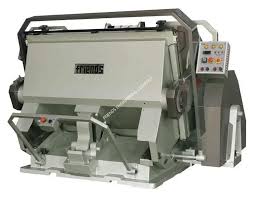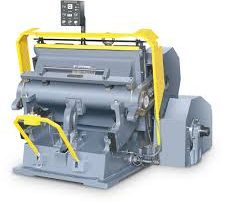“Precision Cutting at Scale: The Latest Advancements in Die-Cutting Machinery for Enhanced Production Efficiency”
Technological Advancements in Die-Cutting Machinery: Modern die-cutting machinery has evolved significantly, incorporating high-speed automation and precision engineering. These machines now feature advanced servo motors that control cutting pressure with exceptional accuracy, ensuring clean and precise cuts for intricate designs and patterns. This is particularly beneficial for industries requiring complex shapes and high-quality finishes, such as the packaging and automotive sectors.
Enhanced Material Compatibility: The ability to handle a diverse range of materials is a critical feature of today’s die-cutting machines. With adjustable settings and robust construction, these machines can efficiently process everything from thin paper to thick industrial-grade materials. Innovations in blade technology and material handling systems further enable these machines to minimize waste and maximize output.
Integration of Smart Technology and IoT: Die-cutting machines are increasingly equipped with smart technology and IoT capabilities, allowing for real-time monitoring and control of the die-cutting process. These technologies facilitate seamless automation of production lines, enhance predictive maintenance, and ensure consistent quality. They also help in gathering data for optimizing the cutting process, reducing downtime, and improving overall productivity.
Energy Efficiency and Sustainability Efforts: Sustainability is becoming a key concern in the design and operation of die-cutting machinery. New models are more energy-efficient, using less power and generating less waste. Some machines are designed to recycle scrap material, further reducing their environmental impact. Additionally, the use of biodegradable lubricants and the adoption of cleaner technologies reflect the industry’s commitment to environmental sustainability.
Quality Control and Enhancement Features: Advanced sensor technology and optical systems are integral to modern die-cutting machines, ensuring high precision and quality control. These systems detect any deviations or defects in real-time, allowing for immediate corrections. This not only helps in maintaining high standards of quality but also reduces material wastage, contributing to cost efficiency.
Challenges and Future Directions: While technological advancements have greatly improved the capabilities of die-cutting machinery, challenges such as high initial investment and the need for skilled operators remain. However, manufacturers are increasingly offering modular machines that are easier to upgrade and require less technical skill to operate. Looking ahead, further developments in automation and material science are expected to drive the next generation of die-cutting machinery.
Conclusion: Die-cutting machinery continues to push the boundaries of what is possible in material processing, driven by innovations that enhance precision, efficiency, and sustainability. As the industry moves forward, these technologies will play a crucial role in enabling manufacturers to meet the evolving demands of their markets, ensuring they remain competitive and reduce their environmental footprint.



